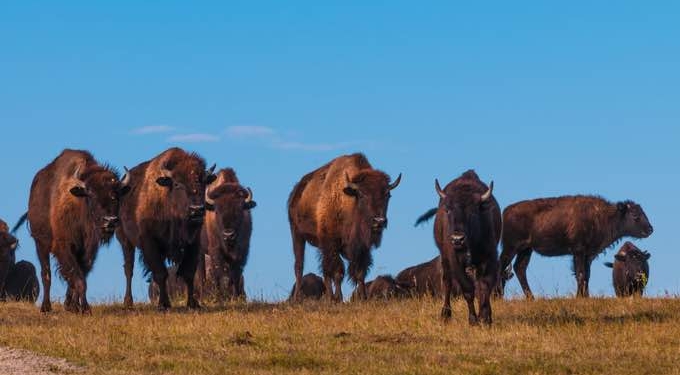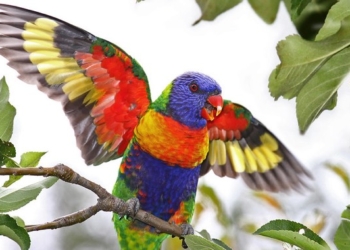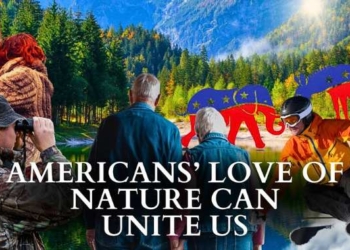
Article Source: The Guardian
On 5,000 hectares of unploughed prairie in north-eastern Montana, hundreds of wild bison roam once again. But this herd is not in a national park or a protected sanctuary – they are on tribal lands. Belonging to the Assiniboine and Sioux tribes of Fort Peck Reservation, the 340 bison is the largest conservation herd in the ongoing bison restoration efforts by North America’s Indigenous people.
The bison – or as Native Americans call them, buffalo – are not just “sustenance,” according to Leroy Little Bear, a professor at the University of Lethbridge and a leader in the bison restoration efforts with the Blood Tribe. The continent’s largest land mammal plays a major role in the spiritual and cultural lives of numerous Native American tribes, an “integrated relationship,” he said.
“If you are Christian and you don’t see any crosses out there, or you don’t have your corner church … there’s no external connection, [no] symbolic iconic notion that strengthens and nurtures those beliefs,” said Little Bear. “So it goes with the buffalo.”
Within just decades, the bison went from numbering tens of millions to within a hair’s breadth of extinction. “Fort Peck was the first to stand up and say we want to help. We want to restore these important bison back to their historic Great Plains home,” said Jonathan Proctor, Rockies and Plains program director with NGO Defenders of Wildlife, who has worked with the tribes for years to bring the bison back.
To do so, the tribe looked to Yellowstone’s bison herd. After the slaughter of the 19th century, 23 bison survived in a remote valley in Yellowstone. Today, the herd is 4,000 strong and is seen as a vital population because it has never been domesticated or interbred with cattle, maintaining genetic purity. While so-called pure genetics of the bison are often important to scientists and conservationists, Kelly Stoner – who heads the bison program at the Wildlife Conservation Society – said the issue is more complicated among tribal groups.
“You’ll find that amongst Native Americans … the predominant attitude is ‘if it looks like a buffalo and smells like a buffalo, it’s a buffalo’. The deep, personal relationship between Native Americans and buffalo exists, and is relevant and important, whether or not a particular animal has 8% cattle genes or not,” she explained.
Still, in 2007, Fort Peck Reservation eyed Yellowstone’s herd as a potential source to build a cultural herd. Fort Peck, and many other tribes, already had a commercial herd – used for economic purposes – but now they wanted to build a second herd with conservation in mind.
But getting bison from Yellowstone national park would prove far harder than Fort Peck initially thought…
Read the rest of this article (including some stunning photos) at The Guardian….















